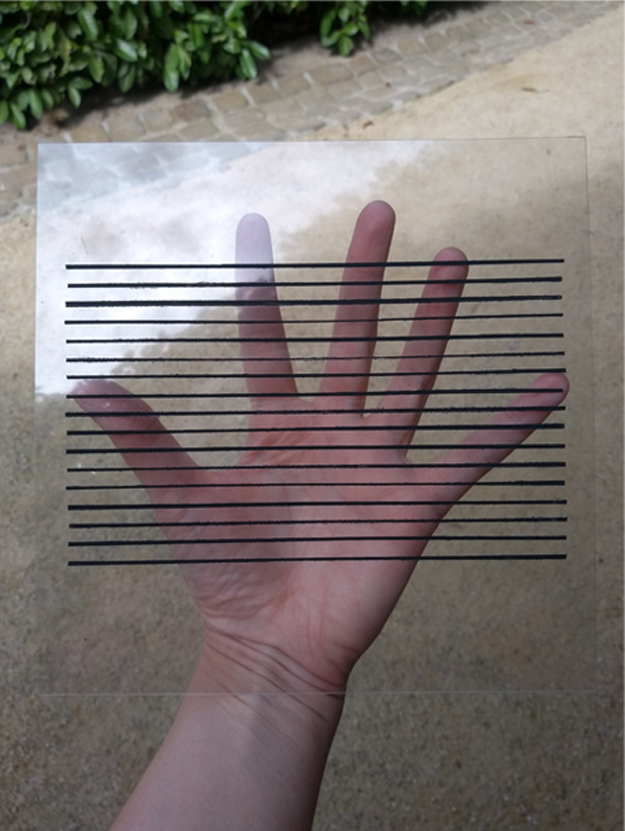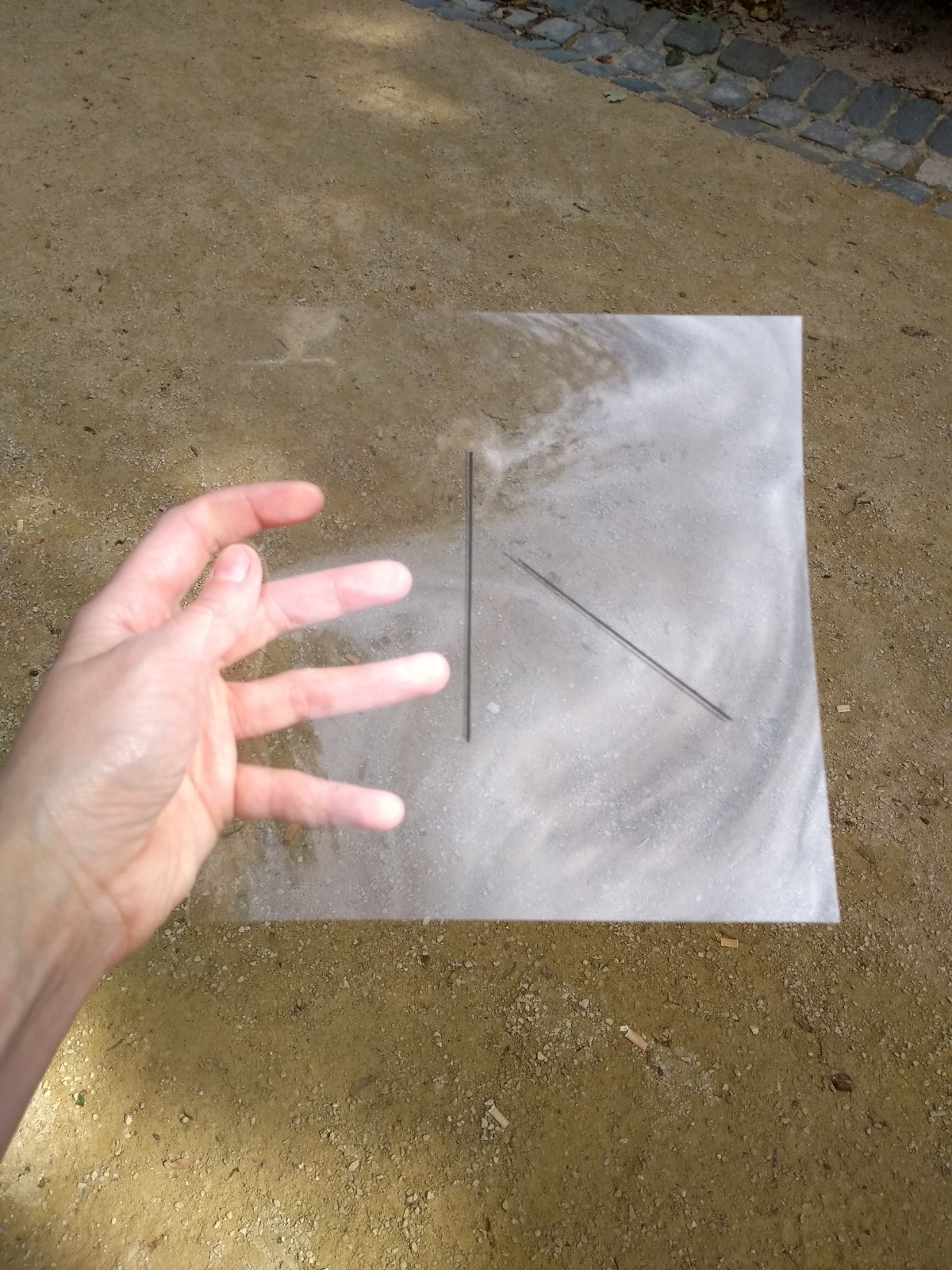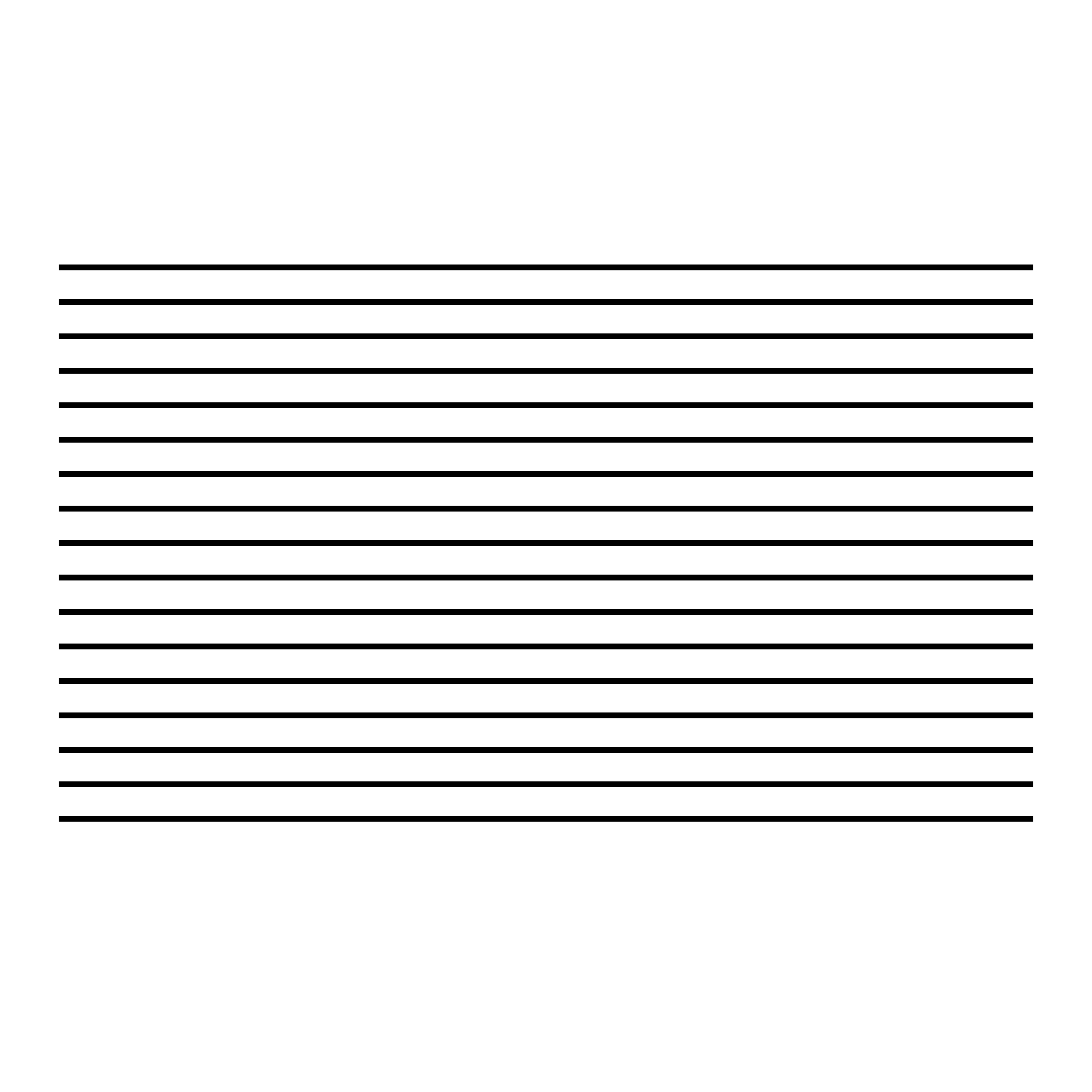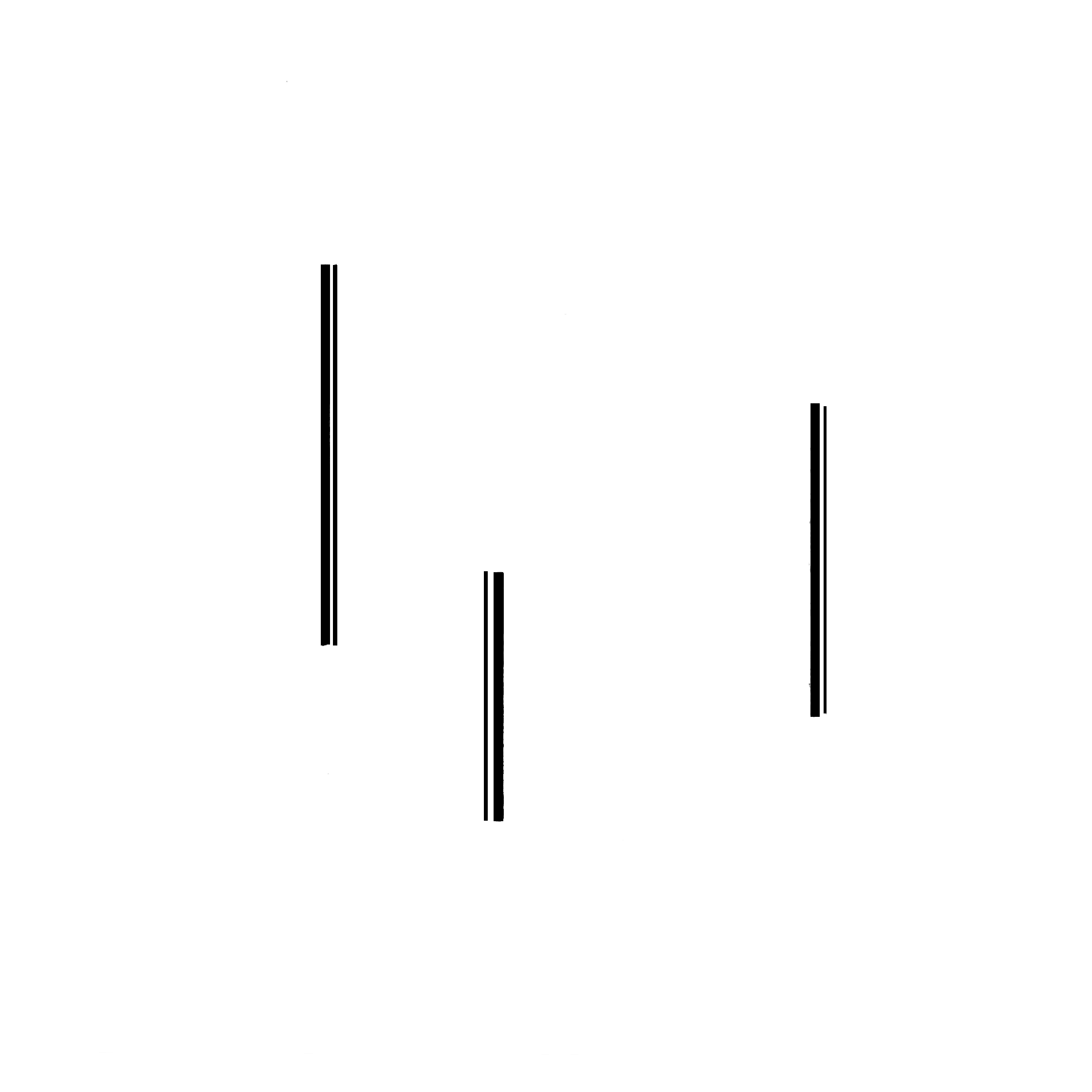░░ ░░ ░░ ░░ ░░ ░░ ░░ ░░ ░░ ░░ ░░ ░░ ░░ ░░ ░░ ░░ ░░ ░░ ░░ ░░ ░░ ░░ ░░ ░░ ░░ ░░
Score by Spaces (2019/2021)
[a graphic score-frame for three Spaces and undetermined performer(s)]
‘Score by Spaces’ is a performable piece written by three Spaces. Each Space contributes a different aspect in the process of composing the piece.
▪ Space 1 determines the spatial coordinates of sound objects on the transparent sheet. Any physical object in this space should be considered as a potential sound-object.
▪ Space 2 determines the shape and characteristics of each sound object recorded in Space 1.
▪ Space 3 is a resonant box. It hosts all sound objects recorded and determined by the first two Spaces, and transported into it by the transparent sheet.
Any space, outside or inside, open or closed, grand or mundane, of any size or volume, of any meaning or purpose, at any geographical location can be Space.

The transparent sheet is used to put three Spaces in relation, interaction, and conversation. Spaces can be complementary or in confrontation.
Space 1, Space 2, and Space 3 in interaction compose the Score. The human facilitates and records interaction between them, and interprets the score into sound performance. One human can choose to carry all of these roles. It is, however, possible that two (or more) humans can share these tasks.

The process of composing and interpreting the Score:
⊶ Notes on facilitation:
▪ Take the transparent system-sheet to Space 1. Hold it up, or down, turn around… Look through it. Let the space speak through it. Find the view in which Space 1 is speaking to you loudest. Make points of the objects that Space 1 has communicated to you. Each chosen object is marked as a simple dot, to determine the location of the sound object on the system-sheet. Leave Space 1.
▪ Take the system-sheet with location-points to Space 2. Hold it up, or down, turn around… Look through it. Let the space speak through it. Find the view in which it feels that Space 2 has the strongest response to Space 1. Note down the shapes and characteristics of the sound of these points as they appear in Space 2. Leave Space 2.
▪ Take the marked system-sheet to Space 3. Hold it up, or down, turn around… Look through it. Find the view in which it feels the conversation will resonate the most. Make the sounds to these points in Space 3. Then make the sounds on these points in Space 3. Make these sound objects converse with each other. Making sound can be done on any instrument, voice or undetermined object that can be used to produce desired sound (corresponding to marked shapes and characteristics).
⊶ Notes on shapes:
Inanimate state: events of inanimate state (or excessively slow animate state that appears as inanimate) should be notated with various solid 2D and 3D geometrical shapes. If multiple inanimate states of the same character/origin are becoming an object of sounding, the same or similar geometrical shape is to be used. However, even the smallest difference can render an object as completely different. How does the sound of these shapes feel like?
Animate state: events of animate states can be notated with various wave and fluctuant lines, or shapes created of different wave and fluctuant lines. Varied amplitude and/or thickness can be used to emphasize their volume, or their effect, or their affects, both in and to the Space. How does the sound of these lines or shapes feel like?
⊶ Notes on characteristics:
Inanimate state: what kind of vibration moving molecules make inside a rock; how does this sound feel on the skin?
Animate state: what is the sound of blood cells running through veins; how does this sound feel on the inside of the skin?
⊶ TIME
The Score can be interpreted in undetermined time or with determined times. In the latter case, transparent time-sheets can be superposed with the system-sheet (under or above, or any other way).




‘Score by Spaces’ can thus appear in variations. Some could be:
•Score by Spaces, in determinate times frame
•Score by Spaces, with a determinate beginning
•Score by Space, with an undetermined beginning
•Score by Space, in undetermined frame
⊶ TRANSPARENT SHEETS
▪ system-sheet has 17 lines, 17 cm long and 1mm thick, with space between each line approximately 5mm.
▪ time-sheets: there are four preset time sheets; human facilitator can crate additional time sheets.
▪ printed on transparent 19x19cm sheet.
▪ ‘Score by Spaces, in gloom’ is a variation with the use of semi-transparent tracing paper. It can be combined with transparent time-sheets or with the same semi-transparent time-sheets. Additional characteristics of sounding-objects-shape quest in the score in gloom: how do these sounds feel when their density is changed with particle-noise of mist or fog?





You can obtain pre-made transparent/gloom sheets via post by requesting one at contact [at] dejanasekulic.com
You can make your own transparent/gloom sheet by using the printable template of the system-sheet and time-sheets provided on the end. You will need:
•transparent sheet, 19x19cm (A4 sheet can be used; cut-lines included in the template); for ‘Score by Spaces, in gloom’ use semi-transparent tracing paper.
•ink printer.
•[recommended, from personal experience]: a permanent or chalk marker (for the process of composing)
You can download a printable full score, with the template here. When printing the sheet, it would be encouraged to use the actual scale when printing and cutting the sheet in 19x19cm (cutting lines included in the printable pdf).
░░ ░░ ░░ ░░ ░░ ░░ ░░ ░░ ░░ ░░ ░░ ░░ ░░ ░░ ░░ ░░ ░░ ░░ ░░ ░░ ░░ ░░ ░░ ░░ ░░ ░░
downloadables
⊶ Full text about the work + printable tamplate for transparent syste-sheet and time-sheets.
░░ ░░ ░░ ░░ ░░ ░░ ░░ ░░ ░░ ░░ ░░ ░░ ░░ ░░ ░░ ░░ ░░ ░░ ░░ ░░ ░░ ░░ ░░ ░░ ░░ ░░
